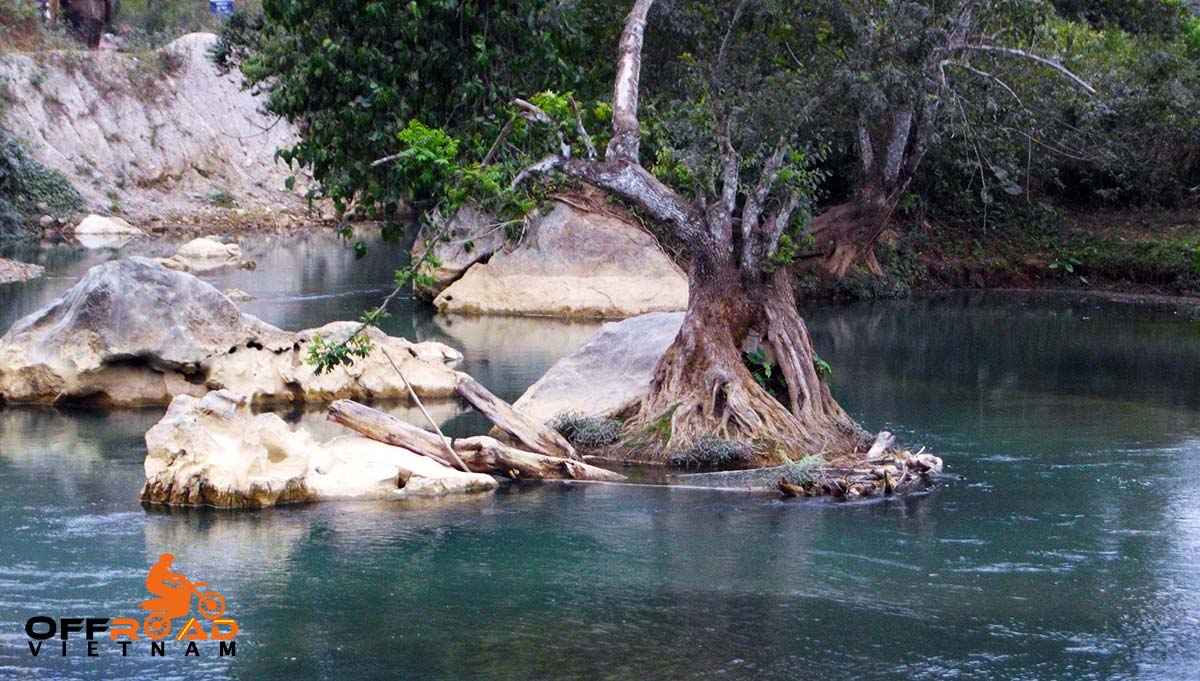BAC KAN PROVINCE, NORTHERN VIETNAM
Bac Kan Province General Information
Bac Kan Province, Northern Vietnam
Capital: Bac Kan
Area: 4,859.96 km²
Population: 313,905 (2019 Census)
Density: 65/km²
Demographics: Vietnamese, Tày, Nùng, Dao
Calling code: 209
Website: www.backan.gov.vn
Bac Kan, also spelled Bac Can, is a province of Vietnam. It is located in the Northeast region, north of the capital Hanoi. In fact, Bac Kan is the only town in the province and also the capital of the province. The province covers an area of 4859.4 square kilometres and as of 2008, it had a population of 308,900 people. It is a mountainous terrain with rich natural resources of minerals and forests. It has numerous mountains, rivers, and lakes which are very scenic. Ba Be National Park and Lake lie within its borders.
Geography
Ba Be Lake
The province is located in the northeast midland mountainous area of Vietnam. Its terrain has the highest altitude among the 11 provinces of the region. Forest area dominates more than 95% of the province. The remainder is available for agricultural and other uses. Due to this rugged and forested topography, the development of water resources has been limited resulting in the exploitation of its forest resources; this has caused the degradation of the forests. The topography is highly variable, varying from 1,640 metres (5,380 ft) (highest point in the Khie Thiouing mountains in the province) to the lowest point of 40 metres (130 ft) in the Cho Moi District. There are numerous rivers and streams flowing through the province, each with small catchment areas. However, most of them have steep slopes and short lengths. Out of the total population, 83% are dependent on agriculture.
Bac Kan Province Climate
The climatic condition of the province is typically tropical monsoonal, which exhibits two distinct seasons namely, the rainy season from May to October accounting for about 88-90% of the annual rainfall and dry climatic conditions between November and April. This results in water shortage conditions during the dry months.
Demographics
According to the General Statistics Office of the Government of Vietnam, the population of Bac Kan Province, as of 2008, was 308900 with a density of 64 persons per km² over a total land area of 4,859.4 square kilometres (1,876.2 sq mi) of the province. It is one of the least populated provinces in the northern mid-lands and mountain areas of Vietnam. The male population during this period was 152800 with females accounting for 156,100. The rural population was 262,000 against an urban population of 56,900 (about 5% of the rural population). The main ethnic groups in the province in decreasing number, are ethnic Kinh, Tày, Nùng, and Dao.

Bac Kan Province Administrative Divisions
Bac Kan is subdivided into 8 district-level sub-divisions:
7 districts
Ba Be
Bach Thong
Cho Don
Cho Moi
Na Ri
Ngan Son
Pac Nam
1 district-level town
Bac Kan (capital)
They are further subdivided into 6 commune-level towns (or townlets), 112 communes, and 4 wards.
Economy
Bac Kan’s economy focuses on mining, forest products, agriculture, and some degree of tourism offered by its mountains, lakes, and the national park. Some statistics related to the economy of the province are the following.
In 2008, there were only 10 farms as against the national number of 120,699 farms.
The province’s agricultural output produced in 2008, at constant 1994 prices, was worth 406.3 billion dongs against the national value of 156,681.9 billion dongs.
The province produced 151,800 tonnes of cereals as against the national production of 43.68 million tonnes, in 2008.
The per capita production of cereals in the district was 491.4 kg as against the national figure of 501.8 kg, in 2007.
In 2007, the industrial output of the province was a meager 376.5 billion dongs against the national output of 1.47 million billion dongs.
Water resources development
The limited water resources development in the province is managed by the communes through better water management practices (government-supported initiatives) such as water users associations both for domestic water use and agricultural operations. The irrigation systems developed, though often of temporary nature, in many communes. The participatory management practices adopted since the 1990s have resulted in a greater realization by the farmers that they can play a positive role in the development of irrigation systems in their region for their own benefit. This system has ensured more efficient water delivery to the fields and is reported to have increased the cropping area by 15% and yield levels by 20%. This has resulted in improved economic and living conditions for the farmers.
For more details about other provinces and cities of Vietnam, please follow this link.


Leave A Comment